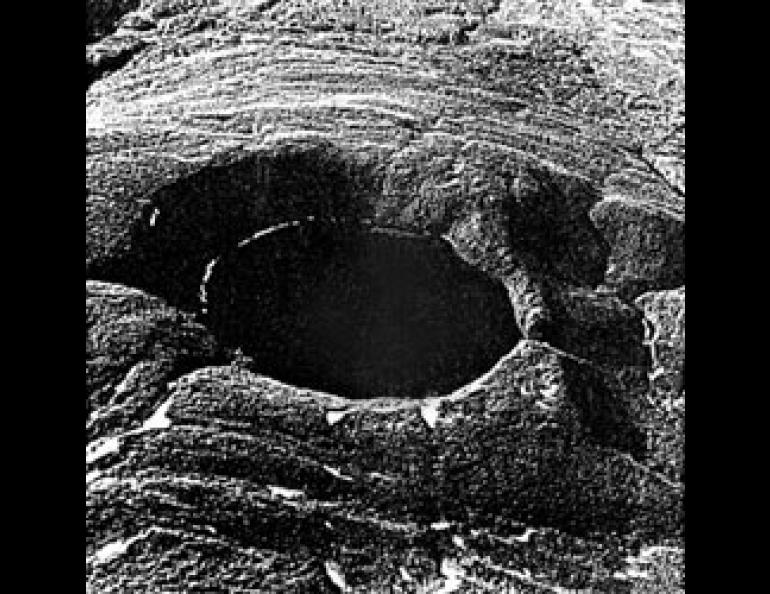
The Savonoski Problem
So far, Savonoski Crater is one of life's deep dark mysteries.
From the air, Savonoski Crater in Katmai National Monument has every appearance of having been caused by a meteorite impact. It occurs high on a sandstone ridge between two valleys, it is nearly circular and it is deep. Savonoski Crater is about 500 meters (1600 feet) across, the lake inside is 50 meters deep and the rim rises up to 60 meters above the water.
Despite the superficial appearance of being a meteorite crater, extensive investigation by geophysicists failed to find evidence linking Savonoski to a meteoritic origin. Proof, if it could be found, would consist of locating meteoritic material or some evidence in the crater's rock of it having been shocked by a meteoritic impact. Microscopic examination of rock can identify such evidence.
Much of the problem is that Savonoski Crater was formed during or before the last time glaciers covered the area. Any evidence of the crater's origin left above the crater's rim has been swept away by glacial action.
If Savonoski Crater was not formed by a meteorite, the best bet is that it is a volcanic maar. In a sense a maar is a volcano that tried but failed. A maar is formed when a magma pipe reaches to near the earth's surface and strikes the water table. Steam generated by the hot magma explosively blows away the overlying rock to form a circular pit. Smoke, ash and some rocks usually are ejected from the maar for several days. Then, evidently because there is not enough pressure to continue the eruption--the maar becomes inactive. Often water runs in to form a lake just as there is within Savonoski Crater.





